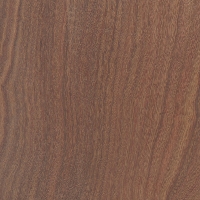 |
Common Name(s): Pau Rosa Scientific Name: Bobgunnia fistuloides, B. madagascariensis Distribution: Small clusters within African rainforests Tree Size: 70-90 ft (21-27 m) tall, 2-3 ft (.6-1 m) trunk diameter Average Dried Weight: 64 lbs/ft3 (1,030 kg/m3) Specific Gravity (Basic, 12% MC): .82, 1.03 Janka Hardness: 2,940 lbf (13,080 N) Modulus of Rupture: 24,100 lbf/in2 (166.2 MPa) Elastic Modulus: 2,480,000 lbf/in2 (17.10 GPa) Crushing Strength: 13,450 lbf/in2 (92.8 MPa) Shrinkage: Radial: 4.2%, Tangential: 6.0%, Volumetric: 10.7%, T/R Ratio: 1.4 |
Color/Appearance: Heartwood tends to vary in color from a pink or yellow to a darker reddish brown, with darker brown streaks common. White to pale yellow sapwood clearly demarcated from heartwood. Color tends to darken with age. Bobgunnia madagascariensis tends to be more on the reddish or orangish side, while B. fistuloides tends to be a more subdued brown.
Grain/Texture: Grain tends to be wavy or interlocked. Uniform medium to coarse texture, with a high natural luster.
Endgrain: Diffuse-porous; large pores in no specific arrangement, few; solitary and radial multiples of 2-3; heartwood deposits common; narrow rays not visible without lens, normal to close spacing; parenchyma unilateral, lozenge, winged, confluent, and banded.
Rot Resistance: Rated as very durable regarding decay resistance, and is also resistant to insect attack. Pau Rosa has good weathering characteristics in outdoor applications.
Workability: Generally easy to work despite its density, though cutting resistance can be high, and the wood has a tendency to burn while being drilled. Planes fairly well despite having interlocked grain (typically only slightly interlocked). Turns, glues, and finishes well.
Odor: No characteristic odor.
Allergies/Toxicity: Although severe reactions are quite uncommon, Pau Rosa has been reported to cause skin irritation. See the articles Wood Allergies and Toxicity and Wood Dust Safety for more information.
Pricing/Availability: Not too commonly seen in the United States, Pau Rosa should be in the mid to high range for an imported African hardwood. Sizes likely limited to smaller blocks, veneers, and turning squares, with larger lengths of lumber much less common.
Sustainability: This wood species is not listed in the CITES Appendices, and is reported by the IUCN as being a species of least concern.
Common Uses: Veneer, carvings, furniture, turned objects, and other small, specialty wood items.
Comments: Formerly classified in the Swartzia genus along with Katalox and Wamara, Pau Rosa has since been placed into its own genus, Bobgunnia.
Pau Rosa is one of only a handful of woods that have the potential of being nearly rainbow-colored; its appearance is reminiscent of Tulipwood or Canarywood.
None available.
None available.
Scans/Pictures: A special thanks to Steve Earis for providing the wood sample and turned photo of this wood species, as well as Rory Wood for providing the samples to demonstrate the color differences between Bobgunnia fistuloides and B. madagascariensis.


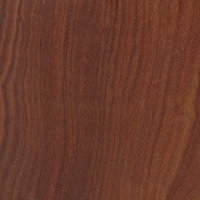
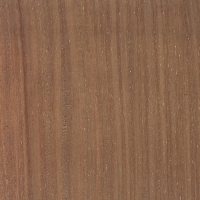
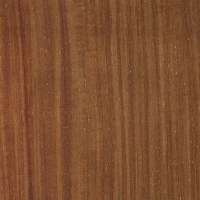
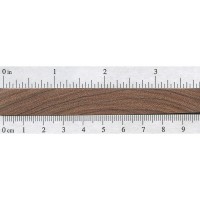
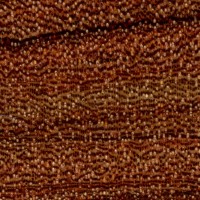
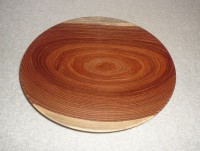
When belt grinding/ drilling pau rosa I found it smelt like burger sauce, or honey mayonnaise, so I’d say it did have a characteristic smell haha
Wikipedia says that pau-rosa is Aniba rosaeodora.
https://en.wikipedia.org/wiki/Aniba_rosaeodora
IUCN agrees.
https://www.iucnredlist.org/species/33958/88301381
The species listed here are not described as pau rosa.
https://en.wikipedia.org/wiki/Bobgunnia
The thing about common names is that they’re sloppy, with lots of overlap. (And just because one source lists a wood as one name, doesn’t preclude another species from being called that same name–take ‘ironwood’ for example.) So I wouldn’t spend too much effort trying to split hairs over common names. But since we’ve gone down this rabbit hole, you can refer to these references which all call these Bobgunnia/Swartzia species by some variation of the name pau (pao) rosa: PROTA (Plant Resources of Tropical Africa) 2012 Timbers 2 – page 131 Cerre, J. C., Gérard, J., Guibal, D., &… Read more »
OK, good. I’m just trying to contribute in any way I can.
I added a note to the Bobgunnia page on wikipedia.
Bobgunia fistuloides wood has a very distinct, pleasant smell, even long after processing. It reminds me of the smell of halva or baklava :-)
A very beautiful wood, especially quarter sawn. Also nice pleasant smell when working with high speed tools.
I can safely say the “reports” of skin irritation are…well founded. Turned a piece into a bowl today, now my face is burning despite protection.
Besides that, beautiful wood but I found it generates a *lot* of friction. Even with a light touch it kept trying to grab my tools.
I work alot with Pao Rosa (correct spelling) and have never found any trouble with my skin. This beautiful wood is hard, heavy, and smells so pleasan when planed/jointed.
Pau Rosa (correct spelling) is Portuguese for the broadly used term “Rosewood”.